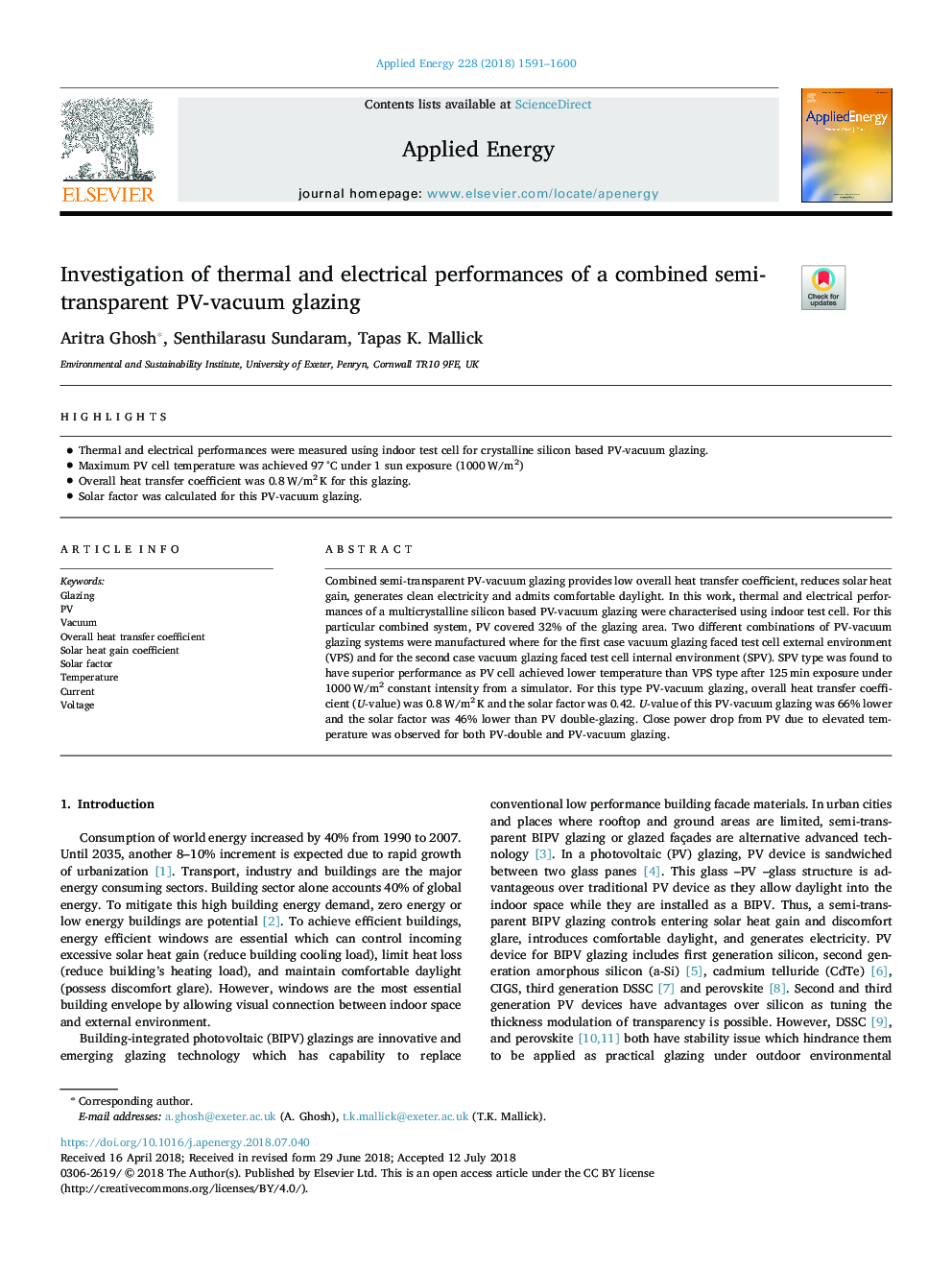| Article ID | Journal | Published Year | Pages | File Type |
|---|---|---|---|---|
| 6679864 | Applied Energy | 2018 | 10 Pages |
Abstract
Combined semi-transparent PV-vacuum glazing provides low overall heat transfer coefficient, reduces solar heat gain, generates clean electricity and admits comfortable daylight. In this work, thermal and electrical performances of a multicrystalline silicon based PV-vacuum glazing were characterised using indoor test cell. For this particular combined system, PV covered 32% of the glazing area. Two different combinations of PV-vacuum glazing systems were manufactured where for the first case vacuum glazing faced test cell external environment (VPS) and for the second case vacuum glazing faced test cell internal environment (SPV). SPV type was found to have superior performance as PV cell achieved lower temperature than VPS type after 125â¯min exposure under 1000â¯W/m2 constant intensity from a simulator. For this type PV-vacuum glazing, overall heat transfer coefficient (U-value) was 0.8â¯W/m2â¯K and the solar factor was 0.42. U-value of this PV-vacuum glazing was 66% lower and the solar factor was 46% lower than PV double-glazing. Close power drop from PV due to elevated temperature was observed for both PV-double and PV-vacuum glazing.
Keywords
Related Topics
Physical Sciences and Engineering
Energy
Energy Engineering and Power Technology
Authors
Aritra Ghosh, Senthilarasu Sundaram, Tapas K. Mallick,
